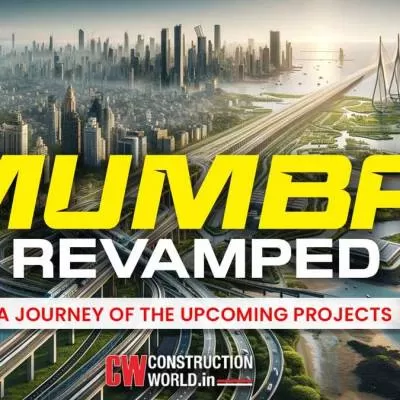Mumbai's Infrastructure Transformation: A Dive into the Future
01 Apr 2024

Mumbai, India's bustling metropolis, is on the brink of a massive transformation with a whopping investment of over ₹3,80,000 crores dedicated to revamping its landscape. At the forefront of urban development in Mumbai, the commencement of several groundbreaking projects marks a new era for the city's infrastructure growth.
The largest sea bridge in the country was recently inaugurated, signaling the start of an ambitious series of projects aimed at enhancing Mumbai's connectivity and accessibility. These developments include the introduction of the nation's first underwater tunnels, the expansion of the Mumbai Metro, and the addition of a new, larger Navi Mumbai International Airport.
The Mumbai Trans Harbor Link: Bridging the Divide
A prime example of the innovative infrastructure growth in Mumbai is the Mumbai Trans Harbor Link (MTHL), a ₹17,000 crore project creating the longest sea bridge in India. Stretching 21.8 kilometers, this bridge aims to alleviate congestion and reduce travel time significantly. The MTHL not only connects Mumbai to Navi Mumbai but also links directly to the upcoming Navi Mumbai International Airport and the Mumbai Pune Expressway, promising a leap in regional connectivity.
Coastal Road Project: A Scenic Route to Efficiency
The Coastal Road Project, an expressway connecting Marine Lines to Kandivali, exemplifies the city's commitment to improving infrastructure. This project, when fully operational, will cut down travel time drastically while handling a massive daily traffic volume. With phases extending up to Virar, the expressway demonstrates the ambitious scale of urban development in Mumbai.
Sewri Worli Elevated Corridor: A Vertical Connection
The Sewri Worli Elevated Corridor is set to transform east-west connectivity in Mumbai. This 4.5-kilometer bridge, connecting two major coastal roads, stands out for its design and strategic importance, offering a seamless transit experience without the hindrance of signals.
Goregaon Mulund Link Road: A Leap Over Natural Barriers
Addressing the discrepancies in infrastructure, the Goregaon Mulund Link Road will provide a vital link between the eastern and western suburbs. This 12.2-kilometer-long road will feature underground tunnels, significantly reducing travel time and bridging the gap caused by geographical barriers.
Navi Mumbai International Airport: Sky-high Aspirations
The construction of the Navi Mumbai International Airport addresses the pressing demand for additional air travel capacity in Mumbai. With multimodal connectivity, this airport sets a new standard for transportation hubs in the country.
Mumbai Metro Expansion: The Future of Urban Travel
The Mumbai Metro expansion is pivotal for the city's transportation landscape. By adding new lines and increasing coverage, the Metro aims to alleviate congestion on roads and provide a reliable alternative to traditional rail and road commutes.
Bridging Gaps and Connecting Cities: The Missing Link and Mumbai-Delhi Expressway
The introduction of the Missing Link project and the Mumbai-Delhi Expressway represents a significant leap forward in intercity connectivity. These roads will not only reduce travel time but also enhance safety and economic interaction between major cities.
Looking Ahead: Mumbai's Path to Modernization
Mumbai's infrastructure revamp is a testament to the city's forward-thinking approach and commitment to enhancing the quality of life for its residents. Projects like the Mumbai Ahmedabad High-Speed Corridor and the Virar Alibaug Corridor further showcase the ambition driving the city's future.
In conclusion, Mumbai is undergoing a remarkable transformation, setting a benchmark for urban development in Mumbai and infrastructure growth. These projects, once completed, will redefine living and commuting in the city, turning today's dreams into tomorrow's reality. Stay tuned as Mumbai steps into a new age of connectivity and accessibility, reshaping its identity on the global stage.
Related Stories

